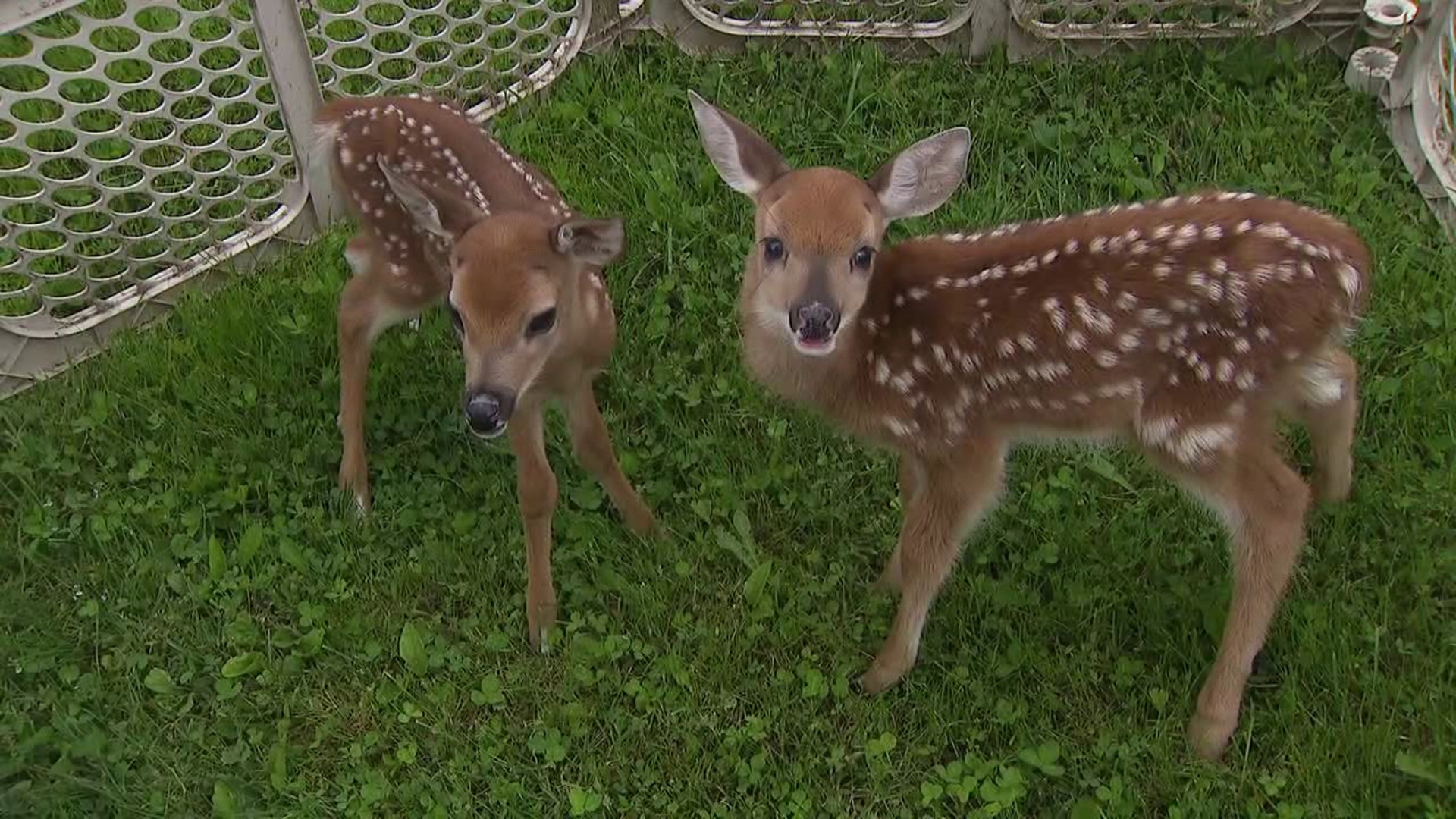MONROE COUNTY, Pa. — Baby deer have found themselves in the care of the Wilderz at Pocono Wildlife Rehabilitation and Education Center near Stroudsburg, but they're not hurt.
Good samaritans brought them in, believing the fawns were abandoned.
"They are actually doing more detriment while trying to be helpful," said Janine Tancredi.
This week, the center has taken in six fawns, but only one has injuries.
Since the animals were taken from their mother's care, staff are now tasked with raising them on top of the other baby animals at the center.
"There is a mom around they very rarely abandon their babies. They are very protective of their babies, and they don't want to see them being pulled away from them, and they will look for their babies for a long time," explained volunteer Jessica Metzgar.
"Mothers only come back two to three times a day. They come back for small increments of time so they are not attracting predators; they lay their babies in the grass so that they're hidden from predators. It's completely normal," said Tancredi.
Pocono Wildlife's Co-Executive Director Janine Tancredi says people bring fawns in every year around this time since the facility is one of two in the state licensed to take in deer. Tancredi says picking the fawns up can cause major health issues for the animals.
Her message is to leave the babies alone.
"Deer and bunnies are very highly stressed animals. They can actually acquire something called Capture Myopathy. It's a white muscle disease, literally from the stress alone, it can cause death," said Tancredi.
Wildlife experts tell Newswatch 16 there are a few signs to look out for to know if a fawn is in need of emergency help.
"You're looking for flies; you're looking for maggots, an apparent injury where there is something exposed like blood or a bone," said Tancredi.
"If you're not sure, call us, we will happily go through it with you and see if this is a fawn is actually in need," said Metzgar.
Volunteers say taking care of the fawns gets expensive. Each one will cost the center about $500 before they are old enough to be released back into the wild.

